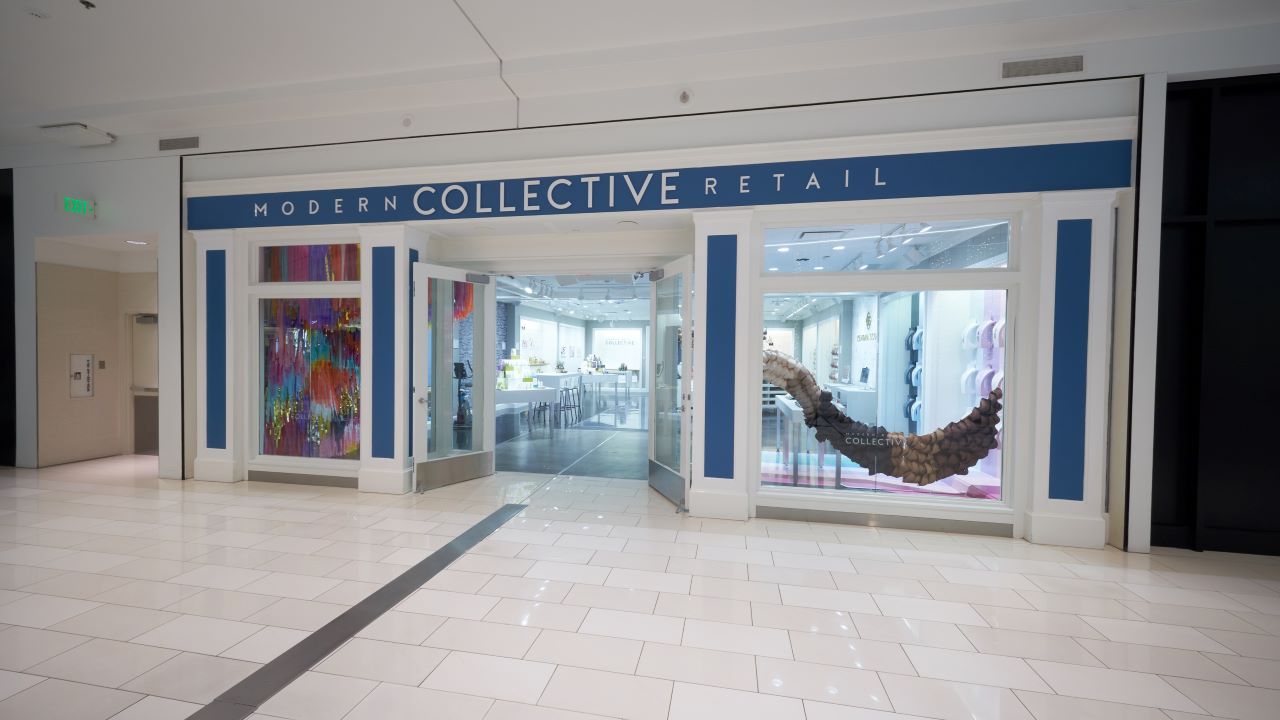
Will the "Store of the Future" Really Look Much Different Than It Does Today?
*Editor’s Note/Disclosure: This post was originally scheduled to publish in late March. However, with retail stores suddenly closed due to the COVID-19 outbreak, we didn’t feel it was the right time to share these insights. Now that many retailers are re-opening their doors, we thought you might be interested to hear what could be in store for customers who choose to shop in stores in the coming months and years. Of course, some of these piloted applications and envisioned customer experiences might actually come to fruition a little differently than originally planned – and we’ve noted throughout where you can expect some changes to be made. However, many of the technology solutions and shopping tools that Jeff discusses in his post and accompanying videos/podcast are in fact becoming more valuable to retailers who are hyper-focused on optimizing omnichannel fulfillment. Some may even prove beneficial to ensuring both employee and shopper safety in store. If you have any questions about the trends discussed within or how they might evolve in response to COVID-19, please feel free to reach out to Zebra’s retail team.
###
According to Zebra’s 2020 Shoppers Study, the majority (77 percent) of retail executives believe customers are happy with the personalized in-store services they provide today. The truth is that only 57% of shoppers are actually satisfied. That’s quite a sizeable perception gap and one that retailers must fix if they want to increase footfall and sales in their stores.
While most people (57%) still make more purchases in store than online*, that trend isn’t going to continue for long. Based on current consumer feedback, only 46% will still shop more in physical stores than online five years from now. (*These stats were based on a study conducted in late 2019. We suspect this timeline has been accelerated due to the COVID-19 outbreak and consumers’ continued preference to physically distance themselves from others.)
But that doesn’t mean that the traditional retail model is dead or even dying. eCommerce didn’t make brick-and-mortar stores obsolete, as headlines would suggest. Sixty-four (64%) of retailers opened new stores in 2019. And eCommerce retailers, including digitally-native stores, are actually sending their customers into brick-and-mortar locations for “buy online, pickup in store” (BOPIS) transactions and online returns. (*This remains true even today, despite the economic challenges posed by COVID-19 on many non-essential retailers.)
Retailers have not been forced to abandon the operating principles that have sustained storefronts for so many decades, either. At least not completely.
As I explained to Therese Van Ryne in a recent sit-down, the convenience of online shopping has simply compelled retailers to simply fashion new customer experiences and strive for operating efficiency and inventory efficiency standards that will appease 21st century shoppers who expect instant gratification – whether in the form of information, products or services.
LISTEN TO THE FULL PODCAST:
“FASHIONING THE STORE OF THE FUTURE”
“Technology is a Top Driver of Positive Shopping Experiences – and Negative Ones”
If retailers want to win and retain shoppers in these competitive times, they must modernize their stores and supply chains. However, it can be difficult to determine which technologies truly give retailers the ability to sense what is happening in their operations or in the market and analyze why it is happening. And without the right technologies in place, it is nearly impossible to know how to “act” in real time to resolve issues that could negatively impact a shopper’s in-store experience – such as a misplaced item that could look like an out-of-stock – or take advantage of an opportunity to increase basket size.
At the same time, it can be hard to know if technology is benefitting or hindering shoppers’ in-store experiences.
That is one of the reasons why retailers and technology solution providers have been participating in concept stores such as the Modern Retail Collective at Mall of America or conducting their own in-store pilots for the past couple of years. They need a real, flexible environment in which to test new technologies such as RFID locationing systems, automation solutions and mobility platforms to learn which ones actually improve the in-store shopping experience for customers prior to implementing at scale.
For example, will “eye in the sky” track-and-trace systems improve real-time inventory management and, specifically, replenishment actions? And how effective could that same system be in helping a retailer understand which items have been tried and purchased versus those that have been left in a dressing room or put back on the shelf. (*Or even monitor employees’ proximity with one another or with customers?)
Some may just want to know if the investments they’re making in new mobile computers at the point of sale and workflow software in stockrooms are enough to gain the intelligence they need to better serve customers. Or if they need to integrate additional layers of “intelligent” technologies – such as an Internet of Things (IoT) platform, a prescriptive analytics solution or even artificial intelligence (AI) – to make those devices, and the workers using them, as smart as they need to be in today’s retail environment. And just how much could an intelligent automation solution improve the in-store experience for shoppers? Could a robot-like device roaming the aisles checking inventory levels and planogram compliance via computer vision technology really prevent out-of-stocks and, therefore, shopper walkouts? Could inventory management be as simple as installing AI-powered shelf cameras to better monitor stock levels? (*This is something that could also assist with social distancing efforts in stores by minimizing the number of associates walking the floor to check shelf status. Associates could be dispatched to very targeted shelf locations with the correct items and quantities only when out-of-stocks are confirmed. This would minimize contacts and, just as importantly, prolonged contacts with customers.)
Though some of these questions have yet to be answered in full, I believe we’ll have a better idea of technological impacts in the very near future as (stores begin to re-open and) the results of these pilot programs start to roll in. As you can see in this report, there were already several revelations in the first wave of the Modern Retail Collective that took place in late 2019 about what technology does (or doesn’t) improve shoppers’ in-store experiences.
For example, we learned that half of shoppers (50%) enjoy self-service options and often prefer to be left alone while in store. (*I suspect this is going to only increase now that COVID-19 requires enhanced physical distancing efforts.) However, value was found “in small nudges upfront to explain or show the technology.” Another 45% of shoppers “wanted to be shown what to do, and then checked in on over the course of their tech interaction. Most of the time, they would pull the store associate in only when they had questions.” Then, there was a small group (5%) of customers who “wanted and needed store associate assistance throughout their entire tech journey.” These aren’t preferences that store associates may have otherwise been clued into if it weren’t for the formal surveys conducted. (*Such assistance will remain necessary in the short term until shoppers become more accustomed to new in-store technologies designed to make them more self-sufficient and aid with social distancing.)
As I explained to Therese, both myself and Zebra CEO Anders Gustafsson as well as some of Zebra’s customers recently had our own “aha” moments about what works and what doesn’t for shoppers in a perfect world. Watch this:
Where Do We Go from Here?
Retailers must move from “systems of record” to “systems of reality” – and they need to move fast – if they want to sustain the success of their physical stores in a digitally empowered economy. Only those with a certain level of operational intelligence and agile execution will be able to adapt to changing market dynamics in real time and meet customer expectations every time they walk in the store. The good news is that most retailers are well on their way to becoming truly “intelligent enterprises” per Zebra’s 2019 Intelligent Enterprise Index.
However, technology isn’t enough.
As we were reminded during the first wave of the Modern Retail Collective, “a holistic set of changes in store is needed to support the technology” if retailers want to get the maximum return on their investments.
Processes must be re-engineered and associates trained to strike the right balance between technology utilization and human engagement so that technology doesn’t become a deterrent. (Remember, technology is not replacing store associates. It is enabling them to become more effective brand ambassadors while simultaneously empowering shoppers to become as self-sufficient as they want.)
Merchandising strategies must also change to accommodate the natural customer flow within stores and evolving shopper interests which, of course, are derived from technology-delivered data. Even more, performance metrics must evolve to better align with shopper expectations and behaviors and ultimately become actionable. The simple key performance indicators (KPIs) that worked five years ago may no longer give the complete view of “success.” (*Even KPIs that were used five months ago may need to evolve due to COVID-19 impacts.)
As McKinsey notes in its report, “a broader set of input and output metrics need to be tracked to truly measure the omni-channel journey. Associates should appreciate their impact on the customers’ omni shopping journeys and help drive the specific and measurable commitment actions in store.”
A Final Thought
While we may not be able to say for certain yet what the store of the future will look like, I’m confident that it will be equipped with a combination of mobile, RFID, analytics and intelligent automation solutions that enable retailers to see what is happening at any given moment across their operations, understand why it’s happening and know exactly what to do about it. Store associates will no longer be left guessing about whether or not their actions are helping or hurting customers’ in-store experiences, and customers will no longer leave a store feeling unsatisfied.

Jeff Schmitz
Jeff Schmitz became Chief People Officer in March 2023. He has more than 30 years of experience in technology, engineering and marketing, and he joined Zebra Technologies in 2016. In his previous role as Chief Marketing Officer, Jeff launched Zebra’s award-winning PartnerConnect program and led the company’s first major brand refresh. In 2020, Jeff also took on the role of Chief Human Resources Officer. As CMO/CHRO, he focused on attracting, retaining and developing top talent and creating opportunities for growth and development within Zebra’s inclusive culture and diverse workforce, and he continues to focus on these areas today as Chief People Officer. Prior to joining Zebra, Jeff served as General Manager and held other leadership roles at Spirent Communications, Visual Networks and Tellabs. He has a master’s degree in computer science from the Illinois Institute of Technology and a bachelor’s degree in electrical engineering and computer science from Marquette University. In addition, he is the executive sponsor of Edge, Zebra’s Millennial and Gen Z Employee Resource Group.




